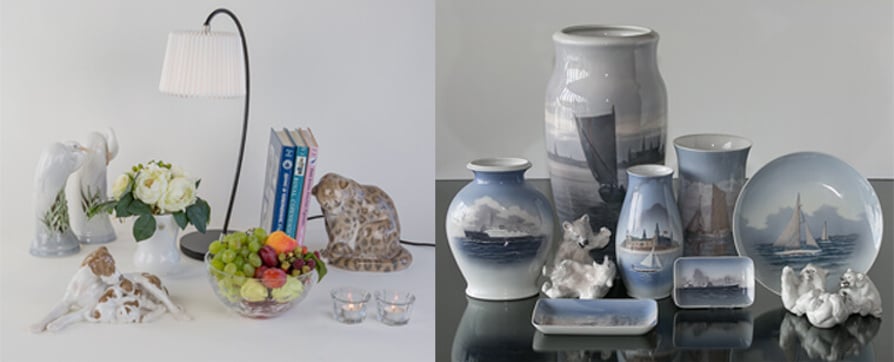The trademark on porcelain by Royal Copenhagen/The Royal Danish Porcelain Factory plays a large role when determining the age of Royal Copenhagen porcelain.
From the founding of Royal Copenhagen 1st May 1775 it was decided that the trademark/brand/factory stamp should consist of three wavy lines (waves), symbolizing the three waterways through Denmark; the Sound and the two belts (the Sound (Oresund)), the Great Belt and the Little Belt).
About the Royal Copenhagen Trademark
The trademark has been used with little variations ever since the founding and every single piece of porcelain produced by Royal Copenhagen has been stamped with the three waves.
The trademark with the three waves has had changes through the years. This makes it possible to tell the age of each piece of porcelain by Royal Copenhagen.
The Royal Copenhagen trademarks shown below were used on porcelain and fine china with blue under glazed decorations. E.g. Royal Copenhagen Christmas plates, figurines and some porcelain sets.
The trademarks development from 1775 to 1923
From 1775 the wavy lines were painted by hand, but in the 1870's Royal Copenhagen began to stamp and glaze the trademark.

Approximately 1870-1890
Blue stamp, under glazing.

1887-1892
Stamp in purple or red on top of glazing.

1892
Stamp in red or green on top of glazing. Used for export items by request from the US.

1894-1900
Stamp in green under the glazing. Crown and DANMARK together with blue waves.

From 1905
Handpainted trademark in blue under the glazing. Used for Juliane Marie porcelain (original on re-productions of 1800's-models).

1921
Handpainted trademark used for the production in China.

1923
Blue waves trademark. Crown and DENMARK stamped in green under the glazing.
 1929-1950
1929-1950
Stamp used to mark unbreakable porcelain and non-glossy porcelain.

From 1889 to approx. 1922
Crown and ROYAL COPENHAGEN stamp in green under the glazing together with a blue waves trademark.

1923
Crown and ROYAL COPENHAGEN stamp in green under the glazing together with a blue waves trademark. Used since 1923 (small trademark).
The development from 1935
Since 1935 Royal Copenhagen have added a small line in the trademark on almost every single piece of porcelain. This small line indicates which year the item has been produced.
By looking at the small green lines/spots above or under a letter in the trademark you are able to determine the year of production and thereby the age of the porcelain item.

I.e. on items produced in 1935, the green spot/line is placed above the first letter in the company name (R). The three waves are still part of the design just not shown on the picture for this purpose.
Use the sketch below to see the following years and how the line above a letter in ROYAL COPENHAGEN tells you which year the item is produced.
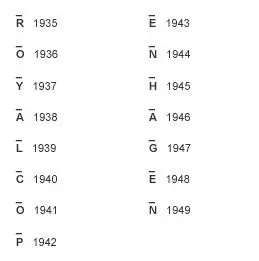
The additions from 1950

In 1949 the small line had moved all the way from R to N in ROYAL COPENHAGEN, thus the small line was placed below the letters from 1950 (as seen to the left below the letter R).
Using the sketch below you can tell the year of production by which letter the small line is placed below in the words ROYAL DENMARK COPENHAGEN:
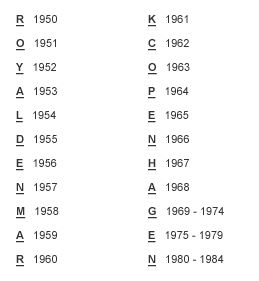
Below you see some examples of markings on years before 1985:
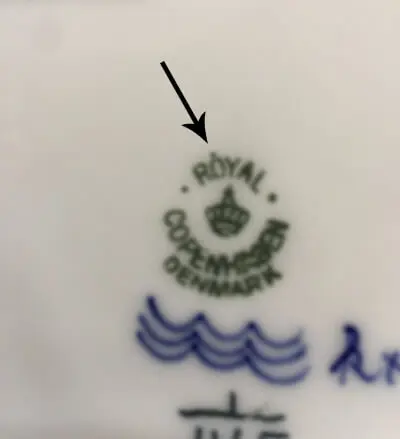
With line above the O in ROYAL it becomes 1936
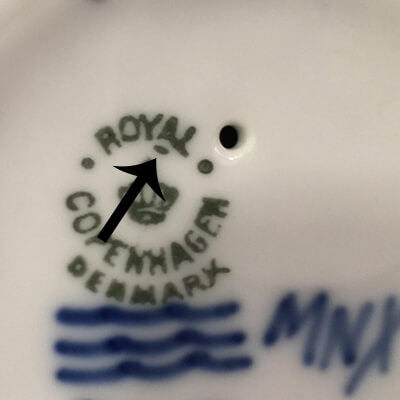
Line below the A in ROYAL makes it 1953
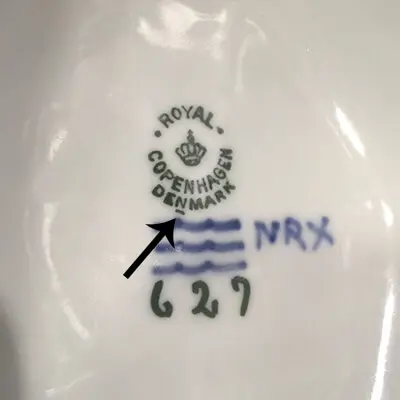
Line below the N in DENMARK show 1957
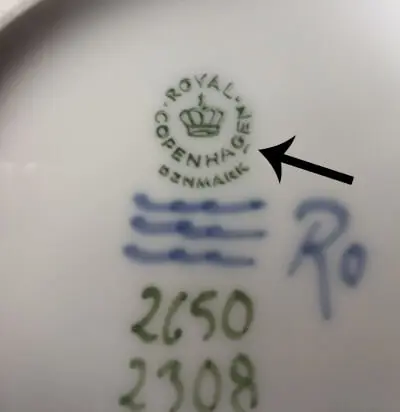
When the line is below the G in COPENHAGEN we have the period 1969-1974.
The trademark from 1985 until now

From 1985 two small lines were employed to indicate the year of production.
See the sketch below to learn what the year of production is on Royal Copenhagen porcelain items:
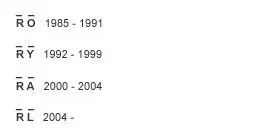
Below you see the pictures that show the markings from 1985-2019:
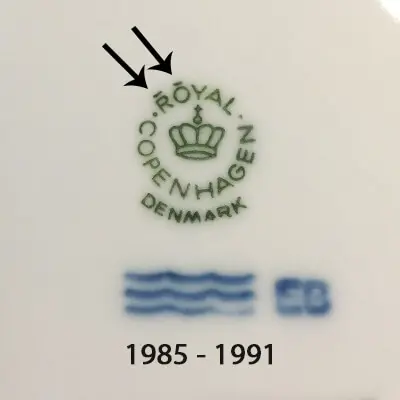
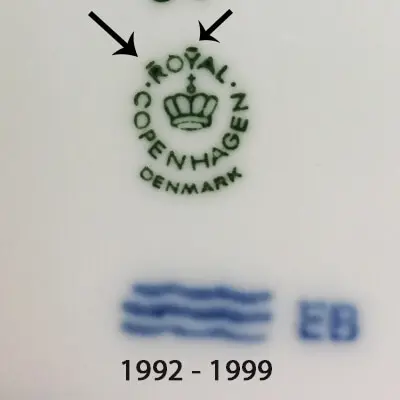
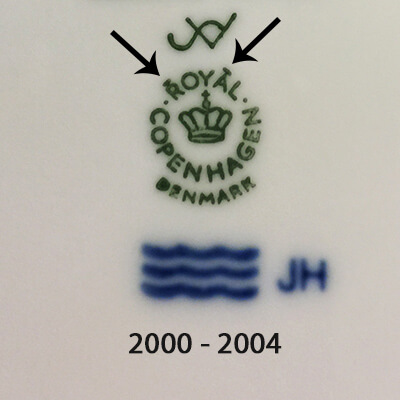
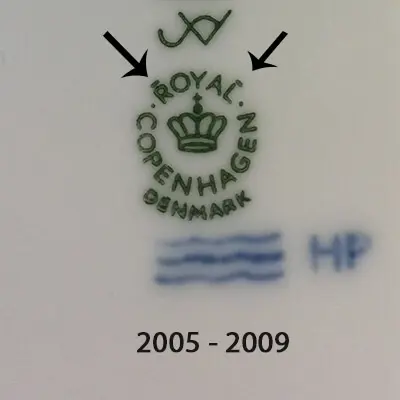
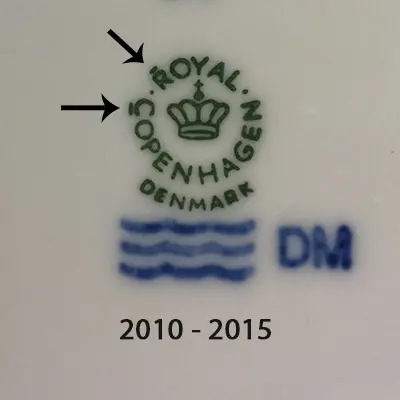
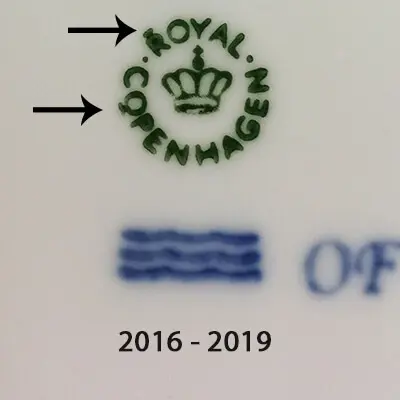
Don't miss free tips and a lot of great sales
DPH Trading
Løkkegravene 49
5270 Odense N, Denmark
CVR-no.: DK61086013
Follow us on social media:

 We are e-approved
We are e-approved


